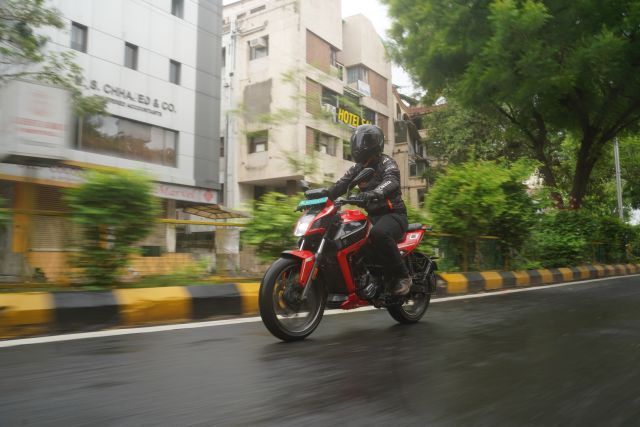
The Matter Aera is a unique offering in the ever-growing electric two-wheeler space which provides a manual transmission as well as liquid cooling. This certainly makes for a unique riding experience, but is it enough to make the bike desirable?
Last year we rode a pre-production version of the Matter Aera, and the bike we got to ride this time round in Ahmedabad was the production-ready, customer-spec version of the same. No major changes have been made since then but Matter say that they’ve made minor tweaks here and there to make the overall calibration of the Aera’s systems better. The only part-specific change that was mentioned were the wing mirrors, which now do not protrude outwards as much.
The Aera is a striking motorcycle, with robotic styling cues here and there, high-volume surfaces which increase the presence of the motorcycle, as well as vibrant colour and graphic combinations. I thought it looked quite good, especially in the red colourway that was assigned to us for testing.
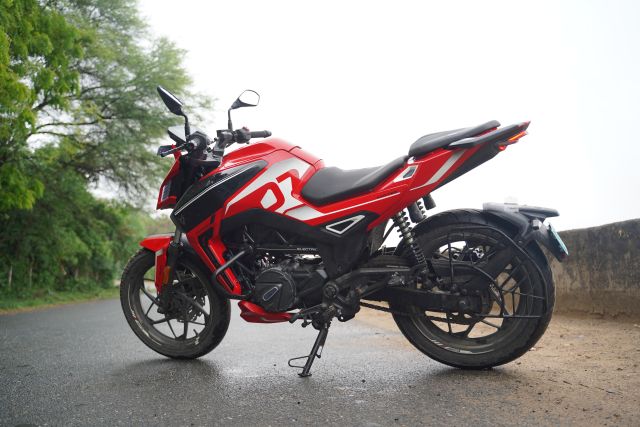
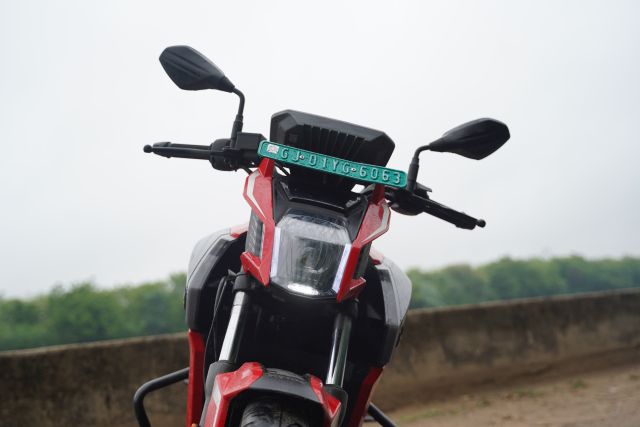
The Matter Aera gets a 5 kWh battery pack which produces 15.6 hp and has a claimed IDC range of 172 km. It has three riding modes; eco, city and sport, as well as a reverse mode. Additionally, the big highlight here is that it has a four-speed manual gearbox and a chain drive to bring it closer to the conventional ideal of what a motorcycle is supposed to comprise of.
The combination of three riding modes and four gears makes for several different ways in which the bike can be ridden. The transmission system, although consisting of a shifter and a clutch assembly exactly like that on an ICE bike, does not work in exactly the same way and does take some unlearning in order for seamless operation to be possible from the rider’s end. For instance, the bike can be kept at standstill in any gear without the clutch pressed, and one can simply accelerate and set-off in any gear in any mode, although the responsiveness of the throttle and the motor will vary accordingly. A few times, owing to muscle memory, I released the clutch gently and started accelerating mildly at the same time, which is not required, and caused the motor to produce a very uncomfortable whine. The bike also does not require you to change gears when speeding up or slowing down as an ICE bike would, but being in the correct gear certainly helps.

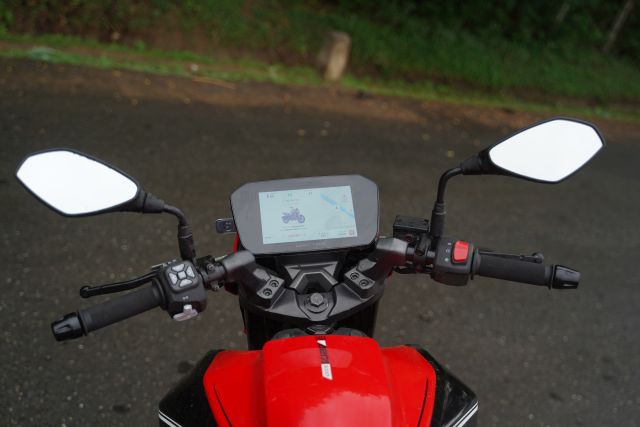
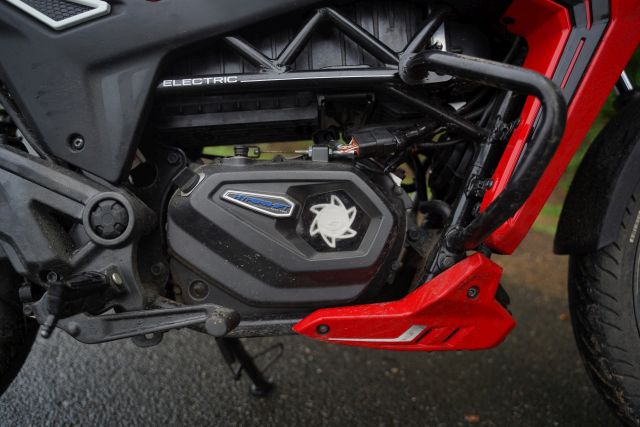
In the Sport setting, this is a satisfyingly quick bike which can cross 100 km/h and feels reasonably sprightly while doing so. City and Eco modes are also very usable and will certainly give you a higher overall range. Overall, this was a unique and fun riding experience which is currently one-of-a-kind with respect to its drivetrain configuration. The bike maneuvers well in the city, and the tyres and brakes also perform well. I feel the rear suspension could have been calibrated slightly better since it did feel a tad jittery at times. However, I did also ride on some terrible roads consisting of plenty of mud, water and surface undulations, and the Aera forged its way through all of it without a bother.
I am still on the fence about the presence of the manual transmission. At times it felt like a cool addition to have, but other times it felt like it was getting in my way a bit. I am not questioning whether or not it works, because it does, but rather if, in the grand scheme of things, it adds to the experience of riding an EV. This won’t be for everyone and therefore an elaborate test-ride should be a must if you’re considering this bike.
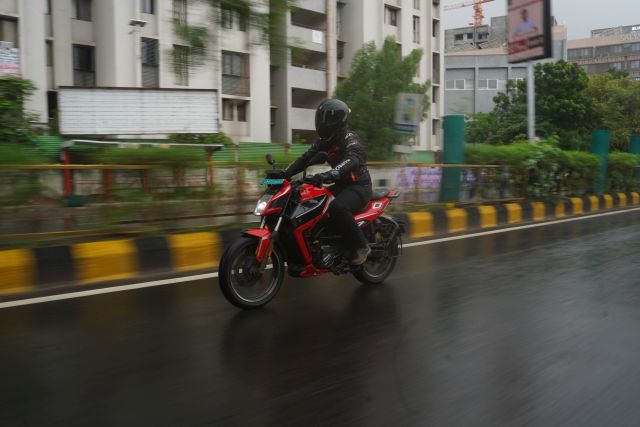
The tech on the bike is also a definite talking point. The display is a large seven-inch colour-TFT touchscreen which rather cleverly disengages its touch-sensitivity while the bike is in motion. Any operations while moving have to be done over the D-pad on the left-side switchgear. The UI is well laid out and the various functions are easy to access. Additionally, Matter have also released their Matterverse companion app for the bike which provides an insane amount of ride telemetry as well as additional features such as being able to set a waypoint in the application and then pushing it to the bike’s display. The bike has an in-built 4G sim and the on-board maps feature works excellently well. The Aera is also able to run a full system diagnostic check to detect any errors or faults which may require further attention.
The Matter Aera starts at Rs 1.83 lakh for the base ‘5000’ variant and Rs 1.94 lakh for this, the ‘5000+’ variant, which gets more features than the former. This is not a cheap EV to acquire, but then again, it’s also distinctly different to other offerings in this space. The overlap in what makes a motorcycle in the EV and ICE spaces is certainly an interesting point of discussion; it’ll be fascinating to see what direction the industry heads in.
Also read: CRA Motorsports Launch Student Moto Tech Challenge 2026


Leave a Reply